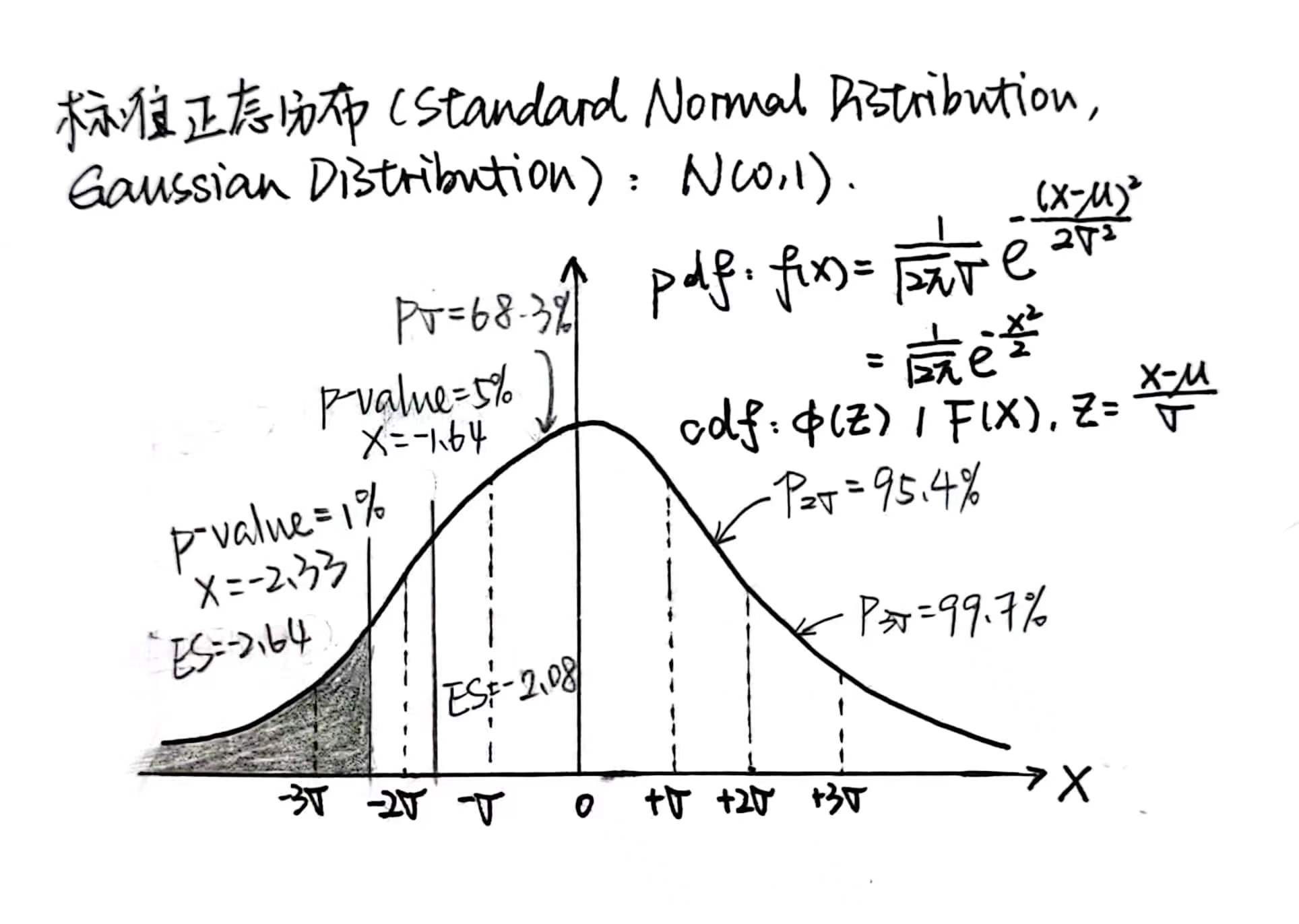Investment Brief Note
经12-计18 张诗颖 2021011056
1 金融市场 Common Sense
金融机构:Investment Banking, Commercial Banking, Pension Fund, Mutual Fund, Hedge Fund, Private Equity(股权 / 证券), Venture Capital
2008金融危机:Mortgage-Backed Securities, Collateralized Debt Obligations, Credit Default Swap
Asset Classes:Fixed Income (Money / Capital Market) + Equity + Derivatives
- Treasury bills, Certificates of Deposits (London InterBank Offered Rate), Commercial Paper, Bankers' Acceptances, Eurodollars, Repo and Reverse Repo, Federal Funds, Exchange-Traded Funds (Asset Management + Authorized Participants)
- (Inflation-Protected) Treasury Notes and Bonds (par=1000, semi-annual compounding), Federal Agency Debt, International Bonds, Municipal Bonds, Corporate Bonds, Mortgage-Backed Securities
- Equity, Options (Call/Put), Futures
Market:Primary Market + Secondary Market
Private Placement, Initial Public Offering (underwriters + Securities and Exchange Commission + China Securities Regulatory Commission / 中国证监会, prospectus + road shows + bookbuilding), Seasoned Equity Offering
Limit Order Book: Limit-Buy, Limit-Sell, Stop-Buy, Stop-Loss Electronic Communication Networks, NASDAQ, New York Stock Exchange (+ Arca), Sarbanes-Oxley Act Broker / Dealer - Specialist (market maker)
Margin
2 Capital Allocation
It is about speculation, not gamble...
Fisher Effect:
,actually:
, or:
, or: ,正/左偏 = 高估risk,负/右偏 = 低估risk ,正峰度 = 低估risk Value at Risk:最差的情况损失多少,
Expected Shortfall / CVaR:最差的情况平均损失多少
Normal Distribution:
Effective Annualized Rates of Return, Annual Percentage Return Holding Period Return (= Capital Gain + Dividend Yield)
Sharp Ratio
Sortino Ratio
Utility Function
2.1 Markowitz
1. One Risky + Risk-Free
Capital Allocation Line (Expected Return - SD) + Utility Function => Best Allocation
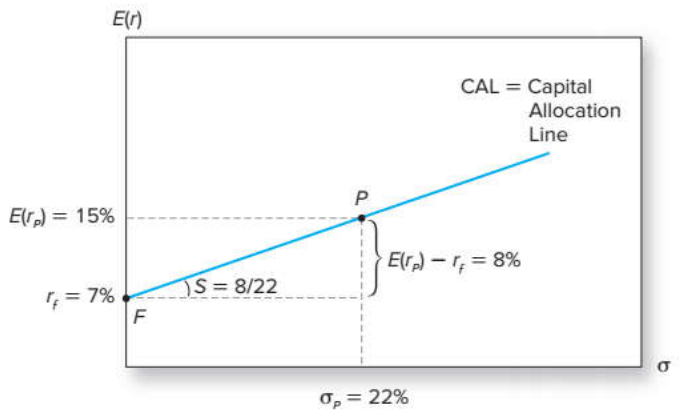
Capital Market Line: CAL for market index + Risk-Free asset (short-term T-bill / money market fund)
2. Two Risky + Risk-Free
Two Risky Assets
Efficient Frontier => Optimal Risky Portfolio => Capital Allocation
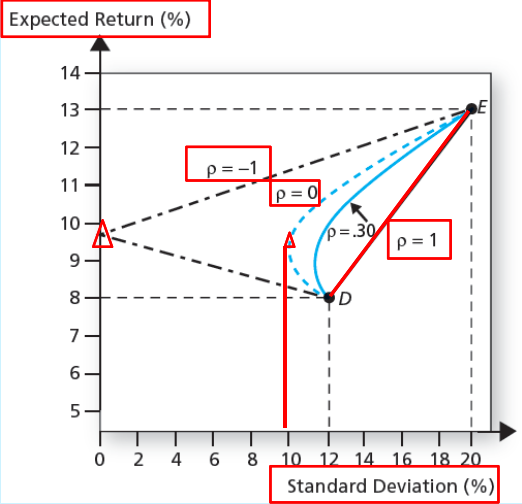
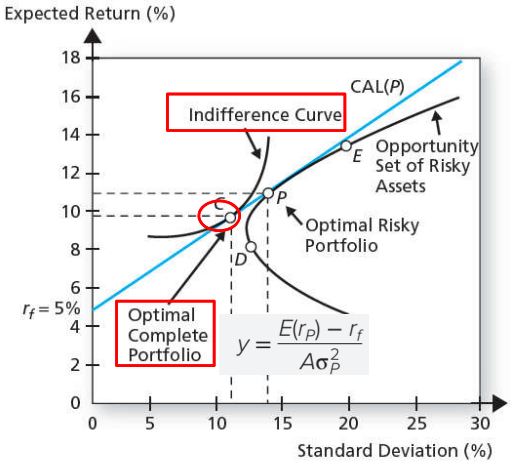
N Risky Assets: Markowitz Portfolio Optimization
Detailed Analysis
Define:
Then, we would have:
Risk pooling (long-term investment): increase overall risk, increase Sharpe ratio Risk sharing: limit pool size, reduce overall risk, increase Sharpe ratio
2.2 Index Model
1. Single Index Model
Single Factor Model
Single-Index Model
Regression:
Security Characteristic Line:
2. Treynor Black Process
an active portfolio (A) comprised of the n analyzed securities + the market index portfolio / passive portfolio (M), the (n+1)-th assets
TB procedure
initial position of each security in the active portfolio:
scale to summation 1:
alpha of the active portfolio:
residual variance of the active portfolio:
initial position of the active portfolio:
beta of the active portfolio:
adjust the initial posistion in the active portfolio:
the optimal risky portfolio:
risk premium of the optimal risky portfolio:
variance of the optimal risky portfolio:
Sharp Ratio on the optimal risk portfolio:
hedged security return
comparison: Index Model vs. Full-Covariance Matrix
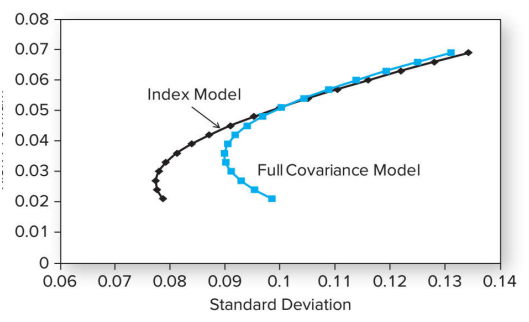
2.3 CAPM
Market Portfolio (M*): 包括投资者所有可交易的证券或资产
Correspondingly, we generate the concept Capital Market Line
Expected Return - Beta relationship:
Security Market Line:
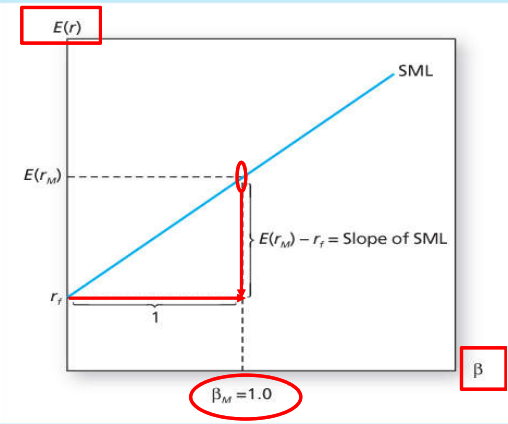
2.4 APT and Factor Model
APT: arbitrage if
Suppose
For $1 investment, invest:
to factor portfolio 1 (with return ) to factor portfolio 2 (with return ) to risk free asset (with return )
Fama-French Three-Factor Model
3 Frontier Topics
3.1 EMH
Cummulative Abnormal Return
- Weak Form: market trading data, technical analysis Momentum: positive serial correlation and negative long-term serial correlation
- Semi-Strong Form: all publicly available information, fundamental analysis Dividend Ratio (D/P): mostly 1% ~ 10%, (+) Earning Yield (E/P): P/E mostly 12 ~ 25 Bond Spread(高低信用评级债的利差): (+) with market risk premium Fama-French Three Factor Model
- Strong Form: including private details, insider trading
3.2 Behavioral Finance
- Cognitive Bias / Heuristics 认知偏差 / 启发式认知 Availability bias 可得性偏差:错误的概率预期(忽略样本偏差、先验为主) Representativeness 代表性偏差:强加因果/关联,回归效应 Overconfidence 过度自信:交易frequency越高,平均回报越低 Conservatism 保守主义:slow react to new information
- Behavioral Bias / Framing 行为偏差 / 框架效应 Convex utility function Prospect Theory (Loss Aversion) Frame effect (refrence point matters, regret avoidance, mental accounting )
- Limit to Arbitrage 有限套利 noise-trader risk, implementation cost, model risk, sentiment index
Other Brief Notes
Bond pricing: Invoice Price = Flat Price + Accrued Interest (in % of par)
Callable Bond: (an example) Face value (par value): $1,000 Coupon rate: 6% Coupon payment frequency: semi-annual Maturity: 10 years Call date: After 5 years Call price: 105% of face value
Determinants of bond saftey Coverage ratios: earnings to fixed cost Leverage ratios: debt-to-equity Liquidity ratios: current asset to current liability Profitability ratios Cash flow-to-debt ratio
Default Bond: recovery rate, default yield spread
Interest Rate Uncertainty and Forward Rates Forward Rate: future short rates implied from current yield curve Expectation Hypothesis:
Synthetic forward loan
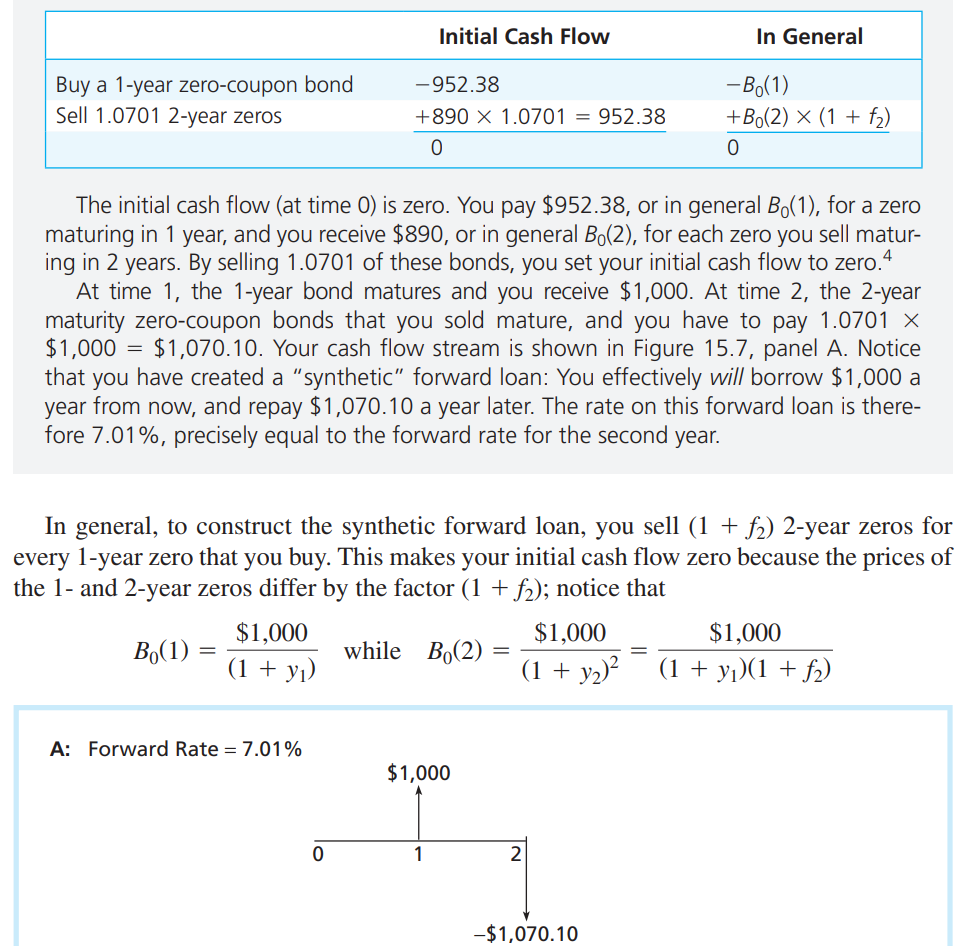
Economic Indicators: leading / coincident / lagging indicators
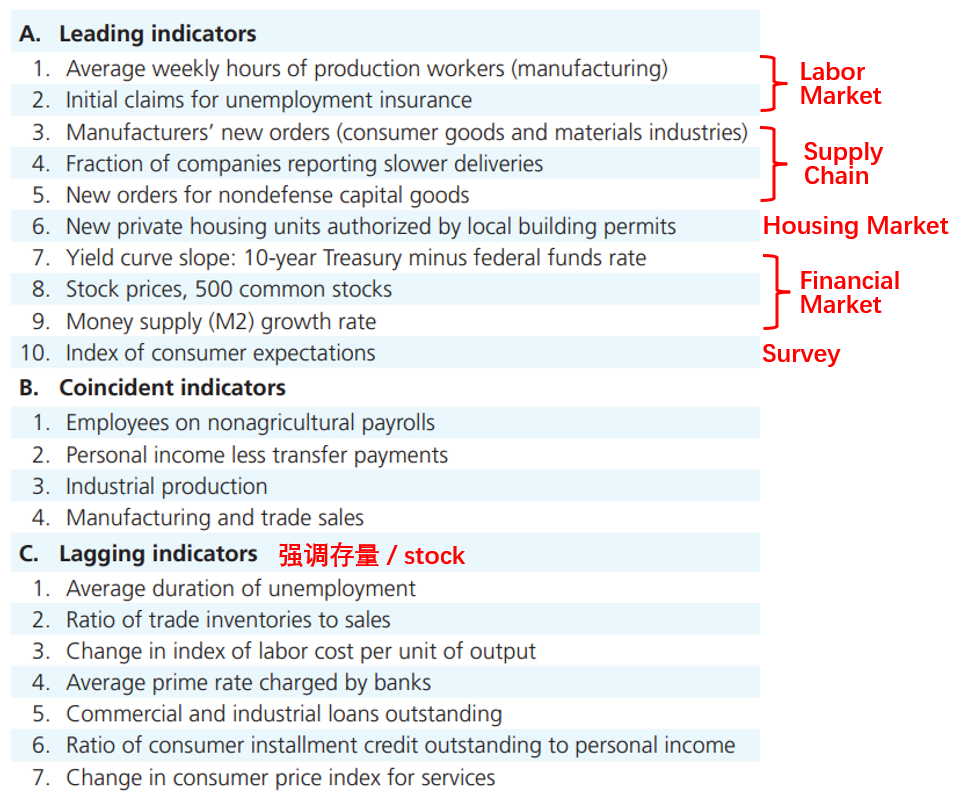
Industry Analysis: cyclical / defensive industries(防御性行业) Sensitivity to the Business Cycle: sensitivity to sales (necessities vs discretionary goods) operating leverage: the split between fixed and variable costs (higher leverage, more sensitive), Degree of Operating Leverage:
